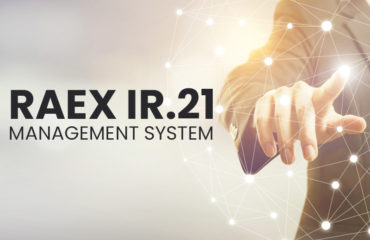
International mobile roaming is a service that allows mobile users to continue to use their mobile phone or other mobile device to make and receive voice calls and text messages, browse the internet, and send and receive emails, while visiting another country. We have all been there, whether traveling for tourism or for business, where we need to keep our communication going and not just rely on the hotel’s internet or its international calls service. That’s where international roaming comes in handy, but you should know that there is a lot going on behind the scenes to ensure the service is available to you and with a reasonable cost.
First, let’s try to quickly understand the players involved in delivering the roaming service via this simple diagram:

Apart from yourself initiating the call abroad and the phone user you are calling at home, we have the 2 telecommunication companies or network operators in the two countries, in addition to the international transit service providers. In order to be able to connect to a visited network and make your phone call, a roaming agreement needs to be in place between the visited network and the home network.
To ensure a successful roaming operation, these various stakeholders have to collaborate closely on various technical aspects. And to make this collaboration work smoothly, they need to have clear and detailed “International Roaming Agreements” that specify the roles and responsibilities of each party. These agreements are essential when drafting Direct Wholesale Roaming contracts for instance. In other words, it is a binding document between the roaming partners that specify the legal roaming business aspects negotiated between them, such as billing of the services obtained or the monitoring to be performed, etc. The GSM Association broadly outlines the content of such roaming agreements in standardized form for its members. The agreements may be composed of various parts, for example:
AA.12: it is the International Roaming Agreement. It is a standard GSM Association PRD (permanent reference document) with standard clauses.
AA.13: it contains the Common Annexes with operational information (e.g. information on tap file, billing data, settlement procedure, customer care, fraud, etc.)
AA.14: Individual Annexes: it contains the information about the operator (e.g. contact details of roaming team, fraud team, IREG team, TADIG team, etc.)
You may have noticed the terms IREG and TADIG and you probably are wondering what those terms mean. We actually explain those terms in another article, you can read it here.
Now, we don’t want to get too technical here or dive into too much details, but you surely got a sense of how complicated the international roaming agreements can be and the challenges behind ensuring what seems to be a simple phone call: and that’s where we come in.
We, at RoamSmart, are here to make this whole process easier for all the stakeholders involved. We support Telcos (Telecommunications companies) in the digital transformation of their roaming and wholesale business and we provide them with high value services addressing their specific roaming needs. Our solutions help optimize workflows and monetize the existing roaming data from several sources. To keep a long story short, we help create win-win partnerships for all the parties involved and, above all, ensure the satisfaction of the end customer.
To learn more about our services and how we can help your business and improve your bottom line, please click here, or just get in touch with us here and we will get back to you asap.




